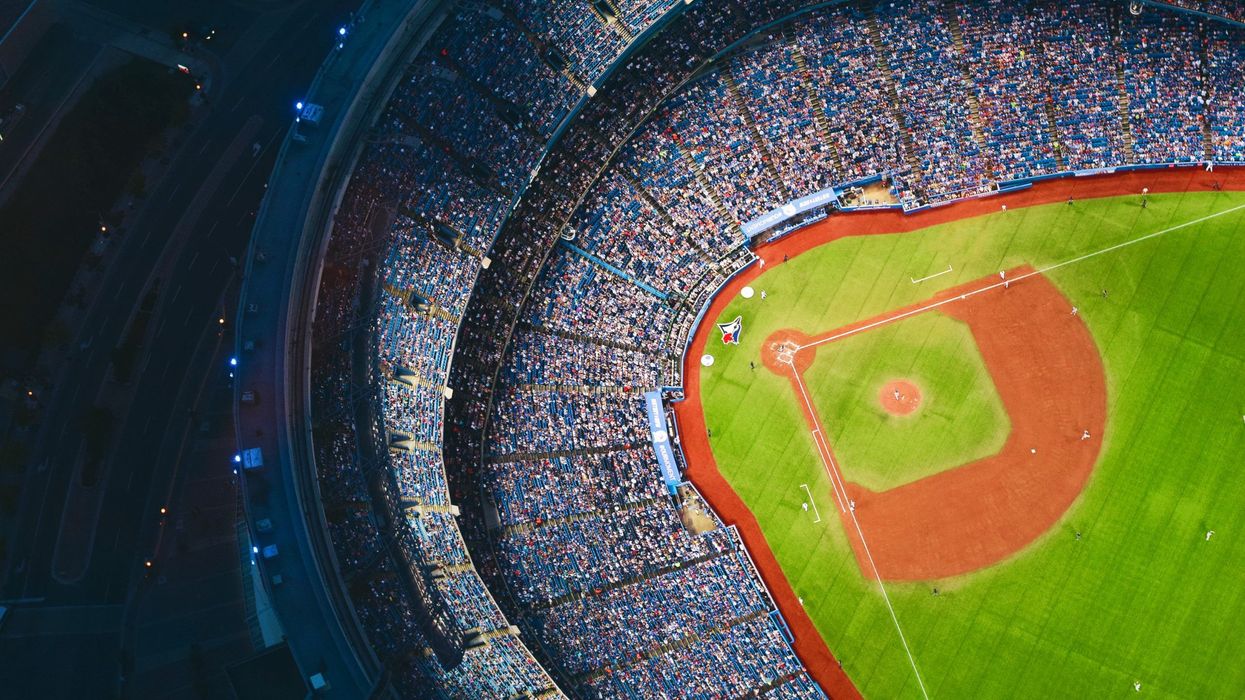UPDATE: Rogers Centre Could Be Demolished As Jays’ Owner Plans New Stadium
If Toronto Mayor John Tory is right, the problem with SkyDome, er, Rogers Centre, is that it’s 30 years old – that’s three whole decades – and unacceptably, inconveniently out of date. That, of course, is doubtful at best. There’s nothing wrong with the place a winning team wouldn’t fix. When the Blue Jays lose, it’s too big. When they’re winning, it’s too small.
And, no, it’s not beautiful. But if beauty were the issue, most of Toronto could be happily torn down tomorrow. On the other hand, neither is it the architectural atrocity that some seem to think. Even if it were, Rogers Centre plays an important role on the landscape of Toronto.
READ: Toronto’s Largest Mixed-Use Development Will Take Up 4.3-Million Sq. Ft.
Ideally situated at the bottom end of the downtown core, easily accessible by public transit and seamlessly fitted into the site, it is the very model of how an urban-minded structure – a very large structure – can occupy space in a city where that comes at a premium. It is a landmark, one that doesn’t overwhelm the neighbourhood. Compared to, say, the CN Tower, it has an almost geological connection to the city topography.
But this matters little in a city where buildings, regardless of their significance, have been reduced to a set of assets to be bought and sold to the highest bidder. Toronto isn’t just open for business; it’s up for sale. The city is turning itself into a commodity whose only bottom line is money. Toronto has become a community that knows the cost of everything and the value of nothing.
READ: Maybe Toronto Sports Fans Just Aren’t Prepared For Success
The real argument isn’t Rogers Centre, but the land it occupies. Corporate wisdom says it could best be monetized by tearing down the stadium and building more condo and office towers. Repeated often enough, this is sort of thinking that kills the goose that lays the golden egg. People go downtown, choose to live, play and work downtown because of the variety and diversity of its offerings.
Some suggest a new stadium might be located in Downsview Park, where land is cheaper. The problem with Downsview is that it’s fast being suburbanized. It has that anonymous look of empty space waiting to be cleared in advance of the next subdivision. Although the park can be reached by subway, it will be decades before the social and cultural infrastructure of Downsview rivals what exists around Rogers Centre. In fact, it’s probably already too late for that. If locals get their way, it’s unlikely the density required to support that infrastructure will never appear. The quintessence of suburbia is single-use zoning, the very opposite of the mixed-use regime that prevails downtown. It’s something not even city planners have been able to destroy, though they’ve come close at times.
READ: Ask An Agent: What’s It Like To Live Near Scotiabank Arena?
When British-born architect Rod Robbie designed SkyDome, bigger was better. That would change shortly after the stadium opened in 1989, when baseball yards became smaller and more intimate. But Robbie, who brought a wonderful sense of innovation and democracy to his projects, wanted something that would serve the wider community. Its retractable roof, which made it useable in bad weather and good, is practical and elegant. This was an unapologetic architecture of bigness. Because the stadium belonged to everyone, it had to be huge. That’s what made it so impressive. It was downright pharaonic in its proportions and, dare we say, its concrete grandeur.
Certainly Rogers Centre isn’t something we’d build today, but that’s another thing that makes it interesting and important. A city is the accumulation of its parts, some new, some old. Already Toronto has erased too much of its history. The process began in the 1950s and ‘60s when countless 19th-century buildings were demolished to make way for parking lots. It may have seemed a good idea at the time, but in retrospect it was clearly a form of civically sanctioned vandalism, a collective act of self-destruction. They say those who don’t learn from the past are doomed to repeat it. Now those parking lots are being turned into condo towers.
READ: Bill 108 Will Bring Out The Development Industry’s Best — And Its Worst
These days, when the climate crisis is the most critical issue we face, tearing down a massive structure that’s only 30 years old also raises serious environmental questions. The embodied energy in a structure like Rogers Centre makes demolition not just wasteful but indefensible. Morally, physically and culturally, the most responsible answer to its perceived problems is renovation and repair.
The “visitor experience” team management worries about so much, but it could be improved very simply: all that’s needed is a decent baseball team, something Rogers has emphatically failed to deliver. To the telecommunications giant, sport, like the stadium and the city, is just another commodity, another item on the ledger. No one would argue a corporation doesn’t have the right to make a profit, only that it must be earned. So far, that hasn’t happened.





















